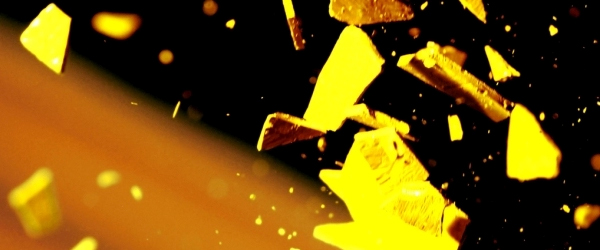
MANUFACTURE OF POWDER COATING
Raw material pre-mixing
All the raw materials used in powder coatings are in the solid phase when mixed together. The polymer and the other ingredients such as pigments, fillers, cross linkers etc are weighed accurately into a mixing vessel. The contents are then blended together to produce a homogeneous mixture
Extrusion
The pre-mx is then fed into the extruder, the barrel of which is maintained at an exact predetermined temperature. The barrel temperature is set so that the polymer is only just liquefied. Too high a temperature will give a low melt viscosity, low shear and poor pigment dispersion which in turn will not produce coatings with the desired performance. The feed rate on the hopper and the speed of the extruder screw are then balanced so that the screw is kept fully loaded. By careful adjustment of these three parameters, conditions of high shear and therefore intimate mixing are maintained within the extruder. The molten extrudate passes between cooling rollers and emerges as a thin sheet of approx. 1mm thickness which is then broken up into chips of about 10-20mm.
Milling or grinding
The chips are then ground to achieve a particle size distribution suitable for the application process eg electrostatic spray, fluid bed dipping. For this a pin-disc or hammer mill is employed. In modern mills an internal classifier is used to limit the maximum particle size, oversized particles being continuously fed back to the mill.
Sieving
This is the final operation in the process, irrespective of the method used to produce the powder. This operation is used to remove any oversize particles which may have passed through the mill and to achieve a finely tuned particle size distribution.
Powder storage
After final sieving, the powder is stored in tightly closed containers in a dry place to prevent possible contamination or possible moisture pick-up. For long term storage powder should be maintained at as low a temperature as possible, preferably below 25oC. Powders should be kept away from moving parts as frictional heat may cause the powder to fuse and possibly cure within the container.

